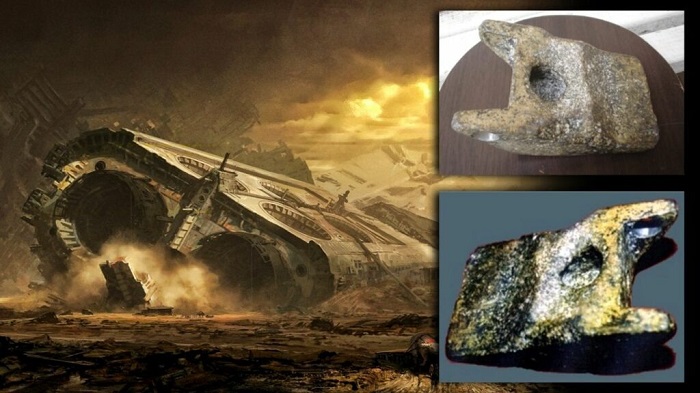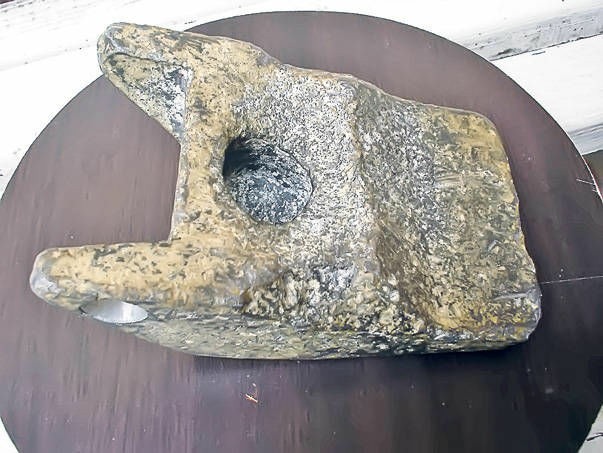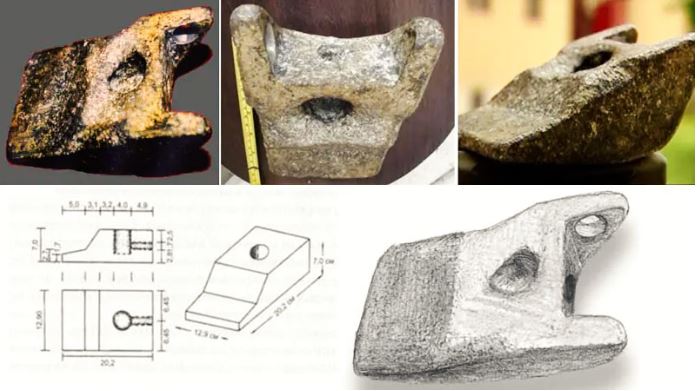This incredible find dumbfounded most of the researchers when the Romanian authorities dated the aluminium piece as being 250,000 years old.
In 1974, a group of construction workers while working on the shores of the Mures River near the town of Aiud in central Romania, discovered three different objects 10 meters (33 feet) deep in a sand trench, of which two were the prehistoric elephant’s fossilized bones but the third object was looking like a wedge of very light man-made metal such as aluminium, which was mysteriously located alongside the two fossilized bones.

This mysterious metal wedge was 7.8 inches long, 4.9 inches wide and 2.8 inches thick, and was initially assumed to be the end of an aluminium axe.
This incredible find dumbfounded most of the researchers when the Romanian authorities dated the bone fossils as being 2.5 million years old and the aluminium piece as being 250,000 years old, as aluminium was difficult to create even by the 19th century.
The experts were even more surprised when they observed the sharp concavities and the edges of the wedge. The further tests were to reveal that the Aluminum Wedge of Aiud was actually made of 12 different metals and was about 90 percent aluminium.

According to sources, the exact composition of the strange artifact is 89% aluminum, 6.2% copper, 1.81% zinc, 2.84% silicon, 1.81% zinc, 0.41% lead, 0.11% cadmium, 0.0024% nickel, 0.0023% cobalt, 0,0003% bismuth, 0.0002% silver and gallium in extremely small amounts. It seems as if it was manufactured as the part of a more complex mechanical system.
This mysterious metal object was handed over to the National Museum of Transylvanian History in the city of Cluj-Napoca, Romania, where it was left ignored in a storeroom for 20 years until the editors from a Romanian UFO magazine found it in 1995.
Later, the artifact goes on display in the museum with a sign that read ‘origin still unknown‘. After some years, the strange Aluminium Wedge of Aiud was no longer on display for the public and was hidden in an undisclosed location.

However, its location has recently been identified at the National History Museum of Transylvania on January 18, 2017. Ancient astronaut theory pioneers Erich Von Daniken and Giorgio A. Tsoukalos got offer a rare opportunity to get a first hand look at the ‘Wedge of Aiud’.
When the artifact was brought out from one of the museum’s lockers where it was hidden for decades, Daniken and Giorgio observed that the wedge was very heavy than their expectation, and they were left just speechless with wonder after seeing the mysterious wedge in their own eyes.
There’re many speculations, theories and beliefs about this mysterious Aluminium Wedge of Aiud. Some people claim that it was something a part of an aircraft used during the World War II. While, others claim it to be a tooth of an old excavator that was made of 2000 series duralumin and many including the UFO researchers believe it to be a perfect evidence of extraterrestrials. On the other hand, many have called it nothing more than a mere hoax, and the debate still rages on.

